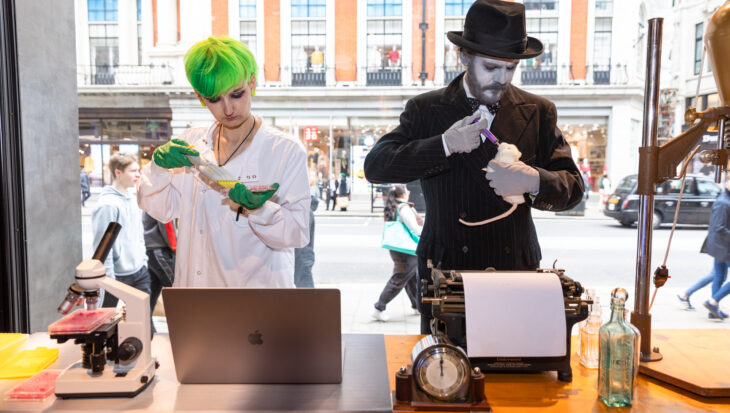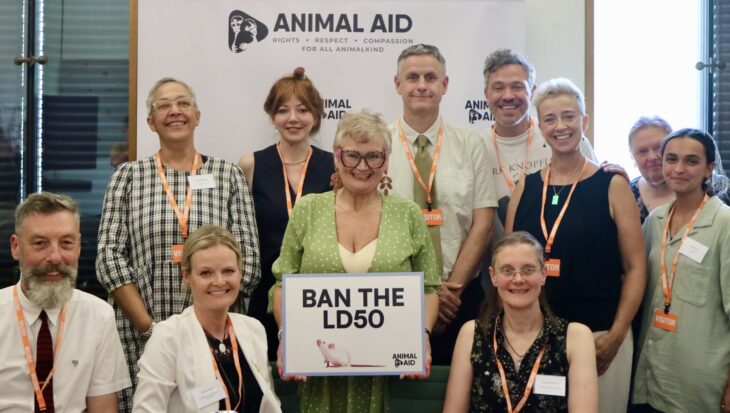The report’s publication comes against a background of undercover investigations of English slaughterhouses, by Animal Aid, that produced filmed evidence of animals suffering severe and routine abuse.
The new report – CCTV Monitoring in Slaughterhouses – sets out how an independent system of monitoring might be conducted, what it would cost and how it might be funded. Crucially, the report’s authors – who are also drawn from Cormack Economics and HEC Associates – endorse the current regulatory ethos that says the cost of regulation should fall to industry and consumers, not to government and taxpayers. This endorsement will make welcome reading for Defra, the government department charged with the regulatory responsibility for the sector, and which faces substantial budget cuts. Defra Minister George Eustice has already stated that the cost of installing cameras in slaughterhouses is ‘relatively modest’.
According to the new Rotherham report: ‘The clear conclusion is that the current system of welfare monitoring is failing and that compulsory use of CCTV with independent monitoring is the only robust solution.’
His report recommends that a formulating body (governmental, academic, animal welfare or other) establishes a monitoring committee to run the scheme, which needs to be ‘transparent, effective, and for credibility, to be independent from interference by both government and industry’. Its members would be drawn from a range of stakeholders, and would appoint staff who would be trained and supported in their viewing of footage.
It recommends slaughterhouse anonymity to protect the workers and to ensure that there is no bias caused by employees knowing they are watching footage from a slaughterhouse with a poor welfare record. It also recommends close liaison with the Food Standards Agency, the body currently charged with regulating welfare at slaughter.
The report’s authors produce a sliding scale of staff costs that are dependent upon how much footage is monitored in a year from each of around 260 slaughterhouses in England. They calculate that, if six hours of footage is to be checked, the staff costs would be in the region of £45,900, while if 36 hours of footage is assessed, costs would rise to £283,500.
The report also examines options for how these costs might be met, and concludes that ‘on balance, we advocate the introduction of a levy per carcass’. It describes the cost per unit as ‘minimal’.
Says Head of Campaigns at Animal Aid, Isobel Hutchinson:
‘The case has been decisively made that the current regulatory system is failing animals, and that CCTV – if monitored properly – could deter and detect crimes against vulnerable animals. With the publication of this report, the suggestion that this wayward industry can’t afford CCTV monitoring has been comprehensively debunked. In reality, it just doesn’t want effective monitoring and – with Animal Aid having found nine out of ten randomly chosen slaughterhouses breaking welfare laws – it’s clear why. But the government must show its commitment to upholding these laws. It must make cameras compulsory, and ensure they are independently monitored. Inaction is no longer an option.
‘Animal Aid’s groundbreaking campaign to reveal what takes place inside typical, randomly chosen English slaughterhouses began in 2009. Since then, it has filmed inside ten abattoirs and found nine to be breaking the law. As a result of the group’s footage, two men were jailed in 2012 for beating pigs and burning them with cigarettes. Other abuses filmed include animals being: kicked and punched in the face; picked up by ears, fleeces and tails and thrown; smashed headfirst into solid structures; and deliberately given excruciating electric shocks through their abdomens, tails, snouts and open mouths. All of these abuses – and more – occurred while the FSA’s vets, funded in part by taxpayers, were stationed at the slaughterhouses.’
Animal Aid welcomes the publication of CCTV Monitoring in Slaughterhouses, and endorses its recommendation that a pilot scheme be established to test feasibility before wider roll-out across the industry.

